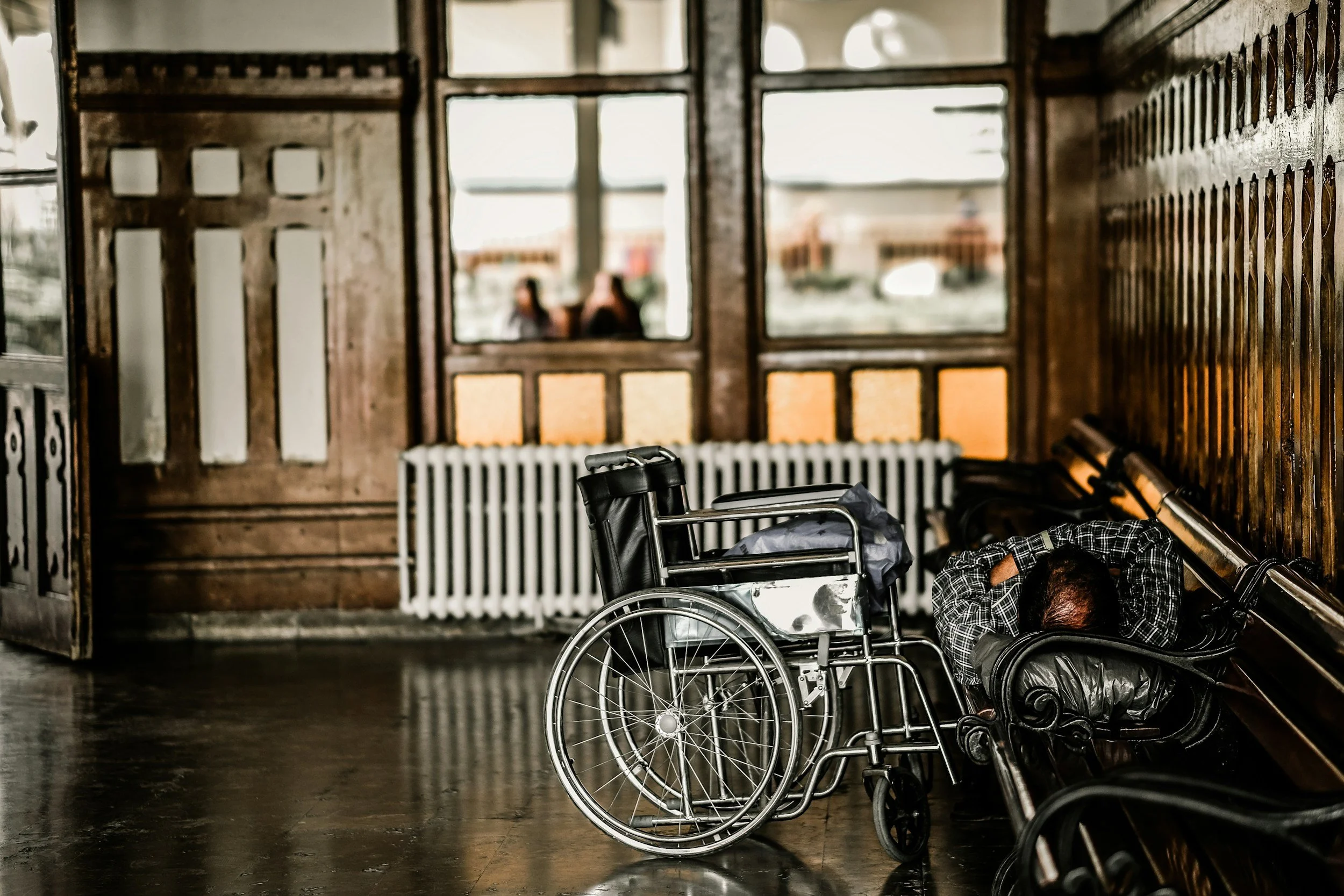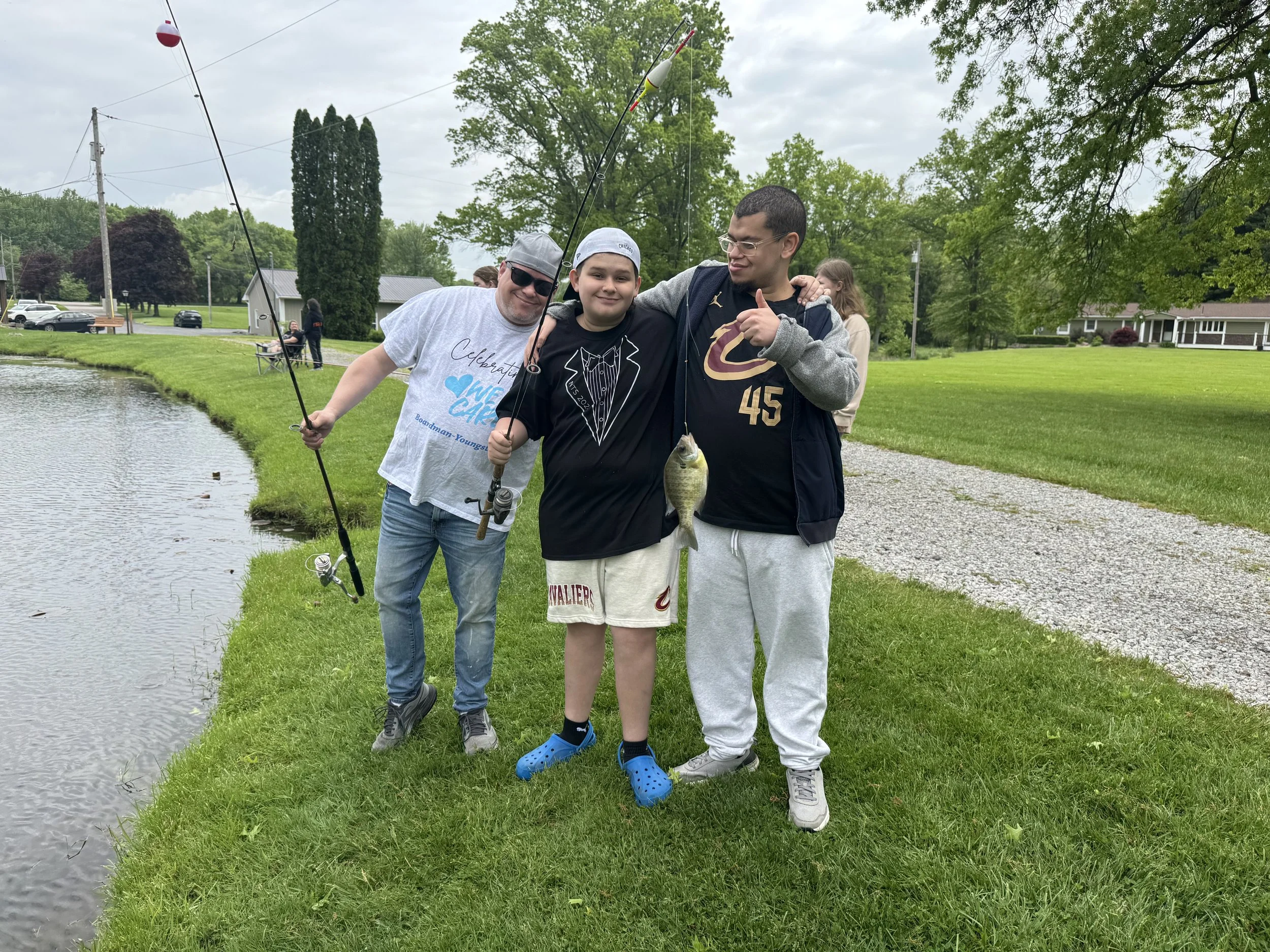
How Predictable Transitions Unlock Access
Transitions might be one barrier we can fix today. Hear how low-cost strategies make services feel safe, clear, and inviting. Which cue—visual, audio, or tactile—would help your space most?

If-Then, Now-Next
Predictability is pastoral care. Learn how “if-then” and “now-next” help autistic and ADHD congregants navigate transitions and participate fully. Ready to build social and spiritual access, not just ramps? What’s your biggest barrier?

When Access Becomes Discipleship: Communication
Ever felt left out by language? We map the path from isolation to inclusion with strategies for hearing, speech, visual, and mobility needs. Tune in, grab the checklist, and tell us: Where does your church need the most growth?

Breaking Down Labels
"A label is not defining. A label is a piece." Powerful reminder that disability diagnoses don't tell the whole story. Getting to know someone changes everything. How do you move beyond stereotypes?

How Polyvagal Theory Shapes Disability Ministry
Your nervous system decides if a place is safe before your conscious mind even processes it. This explains why first days are hardest for people with disabilities in new environments. Learn how to create genuine safety in your church or ministry.

Redefining Inclusion in Faith Communities: Beyond the Worldly Definition
The world says inclusion means "I belong wherever I want." True inclusion means having accessibility to fit where God wants you. What does inclusion look like in your faith community? Listen to our latest episode on redefining inclusion in church.

Understanding Stimming: Building Bridges, Not Barriers
When someone with autism is stimming, should you mimic them? This question challenged everything I thought I knew about connecting with people on the spectrum. The answer isn't simple—but it might change how you think about inclusion.

Navigating Neurodiveristy in Ministry
What happens when a brain that craves structure meets impulsivity? Our episode on "AuADHD" explores this complex intersection and how churches can support those with overlapping neurodevelopmental conditions.

Understanding Learning Disabilities: Breaking Down Barriers
Learning disabilities impact far more than academics - they affect social connections, self-esteem, and spiritual engagement. But does your church have a plan?

Understanding Autism: Beyond Labels
"Understand the layers of identity, but remember being a Christ-follower comes first." Dive into the complexities of autism labeling, person-first language, and making the gospel accessible to everyone regardless of ability.

Unraveling the Mind
Special interests aren't just obsessions—they're potential superpowers. Learn how to recognize the difference between healthy hyperfocus and anxiety-driven perseveration, and how to support neurodivergent individuals in finding their purpose.

Teens and Disabilities, a forgotten group
"They don't want to stick out. They want to blend in." Teenagers with disabilities often hide who they are to avoid bullying and misunderstandings. How can churches build inclusive teen ministries where everyone belongs?

Structured Logical Thinking in Autism
Clear communication. Consistent routines. Respect for interests. These aren't just autism accommodations—they're pathways to meaningful ministry with all people. How might your church become more accessible this week?

Creating Sensory-Inclusive Church Environments: Welcoming the 25%
Preferences vs. Needs: Those without disabilities have preferences about the church environment. Those with sensory sensitivities have necessities. How might understanding this distinction transform your church's approach to true accessibility?

The Evolution of Disability Ministry: From Hidden to Indispensable
From institutionalization to celebration—how has disability ministry changed over the years?

Embracing the Truth: Different Is Not Less
"In God's economy, different is not less." When society whispers that disabilities make people less valuable, remember: God doesn't make water boys. He creates image bearers with inherent dignity.

Discipleship for All: Why Spiritual Growth Isn't Optional for People with Disabilities
"If they have breath in their lungs, they have purpose, because God said so." 80% of Americans with disabilities aren't in church. How can we change this through meaningful discipleship rather than just surface-level welcome?

Jesus Used All Five Senses. Why Don't We?
Jesus designed communion as a full sensory experience—sight, touch, taste, smell, and sound. He set the gold standard for how we should communicate faith. Learn how to apply this wisdom in ministry to people of all abilities.

The Heartbeat of Disability Ministry: Engaging Volunteers with Purpose
Building an effective volunteer team begins with clear communication of your ministry's vision, followed by direct recruitment approaches that identify and affirm potential volunteers' strengths.

Embracing Diversity in Disability Ministry
Examining the medical, social, and spiritual models of disability enables churches to develop more effective and compassionate approaches to inclusion.
About the Blog
The world has gone from an isolating perspective of people with disabilities to a celebration of disabilities. In years past, it is unlikely to have regular interaction with someone with a disability. Today, statistics show that almost 1 in 5 people are impacted by disability. Over 60 million Americans have a disability. Yet, over 80% of those people do not attend church.
Thankfully, we’ve come so far in our treatment of people with disabilities, but we’ve not fully arrived. In the almost 10 years I have been in disability ministry, the statistics changed from 90% to a little over 80% of people with disabilities not attending church. The world has taken significant, not perfect, but significant steps, like television shows, campaigns, and inclusion in our schools and sports.
The world looks like it’s doing a better job, and to some degree it is, but we’re nowhere near where we need to be. Especially the church. The over 80% of people with disabilities not attending church is unacceptable! It’s time for our churches to make big strides. The church must become the most welcoming, valuing, and inclusive place for individuals with disabilities and their families.
The future is bright because pastors, leaders, churches, and volunteers are stepping out and standing up to make sure all of the parts of the body of Christ are included in His church. Not enough, not perfectly, but we are seeing a shift, and the pastors and leaders recognize the need.
God created his people for fellowship. He created us to know Him and love Him through a relationship with Him. Beyond the ultimate goal of being in a relationship with God, the scriptures are endless regarding the benefits, promises, and commands of fellowshipping with one another. No one was meant to live alone. We were meant for community. So let’s keep the conversation going so that we can work together towards the goal of a fully accessible church. Physically accessible, socially accessible, and spiritually accessible. So that every person can have the opportunity to know Christ, grow in Him, and serve Him with the gifts He has given.
Need Resources?
Everyone wants a how-to, step-by-step instruction booklet. Parents want it for raising children. A handbook on teenagers would be fantastic! A written job description gives direction to a new employee. However, the fix of a quick read from the endless books, pamphlets, or descriptions that exist to inform us on the how-to of any topic will never outdo the entirety of the Bible. The scriptures should always be your first resource. But after that, I have some resources for you! Recently, I have written a book about my personal experience as a parent, titled “The Indispensable Kid” as well as a ministry how-to book, titled “Gospel Accessibility and Indispensable People: Disability Ministry, Foundations, Relationships, Programs, Strategies, and Co-laboring in Christ.” Click the link to order yours today!





